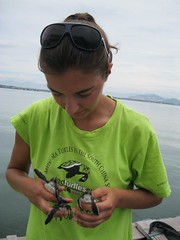– after having participated in an international program –
The 3rd annual Northwest Returnee Conference for education abroad students will be held on January 22, 2011, in Portland OR.
So you participated in a study abroad or international internship program, and now you’re back on campus. It may seem strange to be back in Corvallis, hanging out with your “old” friends and settling back into your normal student life at OSU, after spending a term, semester, or entire academic year abroad. Do you miss the friends you made abroad? Do you think about new favorite food and music you discovered while overseas? Are your friends and family tired of listening to your stories about India, South Africa, New Zealand, or Costa Rica? But you can’t help mentioning the country and culture that you now consider a part of you?
The Northwest Returnee Conference provides a place to meet other education abroad returnees from various institutions in the region and an opportunity to reflect and build on your overseas experience. The concurrent sessions will give participants the chance to learn about opportunities in academic and professional fields and how to utilize skills and knowledge gained through the participation in international programs. Here are brief descriptions of some of the sessions:
*International Career Panel: Meet professionals from different fields who have had various international experiences and are now applying the skills and knowledge they gained while abroad.
*Abroad Again: Learn more ways to return to where you studied/interned or to explore other parts of the world for additional academic and/or professional experiences.
*Graduate Schools & Programs: Considering continuing your education beyond OSU? There are plenty of graduate programs in which your international experience becomes the foundation of learning and research.
*International Resume Building: How can you articulate your international experience in your resume? Should a resume for overseas employers be prepared differently? Bring a copy of your own and learn how to make it stand out.
Any students who participated in international programs in the last few years, including recent graduates, are invited to the conference. Register today through the conference website.






 When I was ten years old my grandpa and I went to Honduras to visit my aunt, who was serving in the Peace Corps. During the two weeks I was there I learned a few key phrases in Spanish, experienced a new culture, made new friends, learned how to make tortillas from scratch, and was awoken early each morning by a rooster. The experience made me look at the world from another perspective and made me appreciate many of the things I took for granted living in the United States, such as clean water, education, and paved roads. That trip was a pivotal moment in my life; I promised myself that I too would one day join the Peace Corps.
When I was ten years old my grandpa and I went to Honduras to visit my aunt, who was serving in the Peace Corps. During the two weeks I was there I learned a few key phrases in Spanish, experienced a new culture, made new friends, learned how to make tortillas from scratch, and was awoken early each morning by a rooster. The experience made me look at the world from another perspective and made me appreciate many of the things I took for granted living in the United States, such as clean water, education, and paved roads. That trip was a pivotal moment in my life; I promised myself that I too would one day join the Peace Corps.













